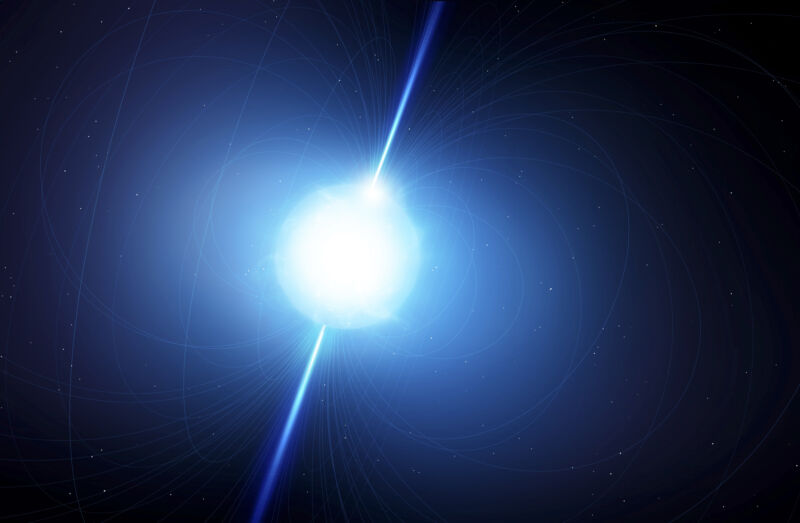Something in space has been lighting up every 20 minutes since 1988

Enlarge / Most of the explanations for this phenomenon involve a neutron star, depicted above. These explanations are uniformly terrible. (credit: MARK GARLICK/SCIENCE PHOTO LIBRARY)
On Wednesday, researchers announced the discovery of a new astronomical enigma. The new object, GPM J1839-10, behaves a bit like a pulsar, sending out regular bursts of radio energy. But the physics that drives pulsars means that they'd stop emitting if they slowed down too much, and almost every pulsar we know of blinks at least once per minute.
GPM J1839-10 takes 22 minutes between pulses. We have no idea what kind of physics or what kind of objects can power that.
A persistent transientGPM J1839-10 was discovered in a search of the galactic plane for transient objects-something that's not there when you first look, but appears the next time you check. The typical explanation for a transient object is something like a supernova, where a major event gives something an immense boost in brightness. They're found at the radio end of the spectrum, fast radio bursts, but are also very brief and, so, fairly difficult to spot.